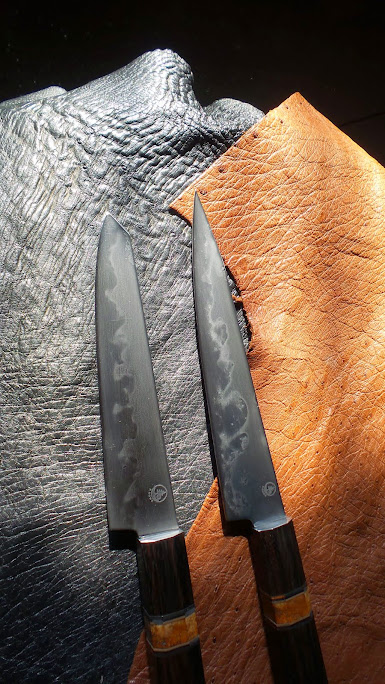Thanks guys. What happened was, and I do it pretty often when I am grinding after heat treat, I ground the edge too thin. I get to concentrating so hard on getting my grind totally flat and uniform with regard to getting out the previous belt scratches that I just make too many passes and suddenly I look up and a 1"-2" section of the blade about 1/4" high is bright blue. and it's so thin that some of the edge of the blade has eroded away. I guess I should ask the question: How thick should my edge be when I'm finished with the 2 400 grit passes that John mentions above? I hope you guys don't get as impatient with me as I get with myself.
Wallace



